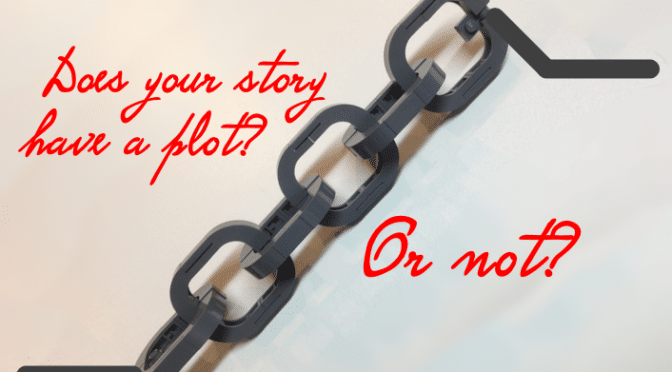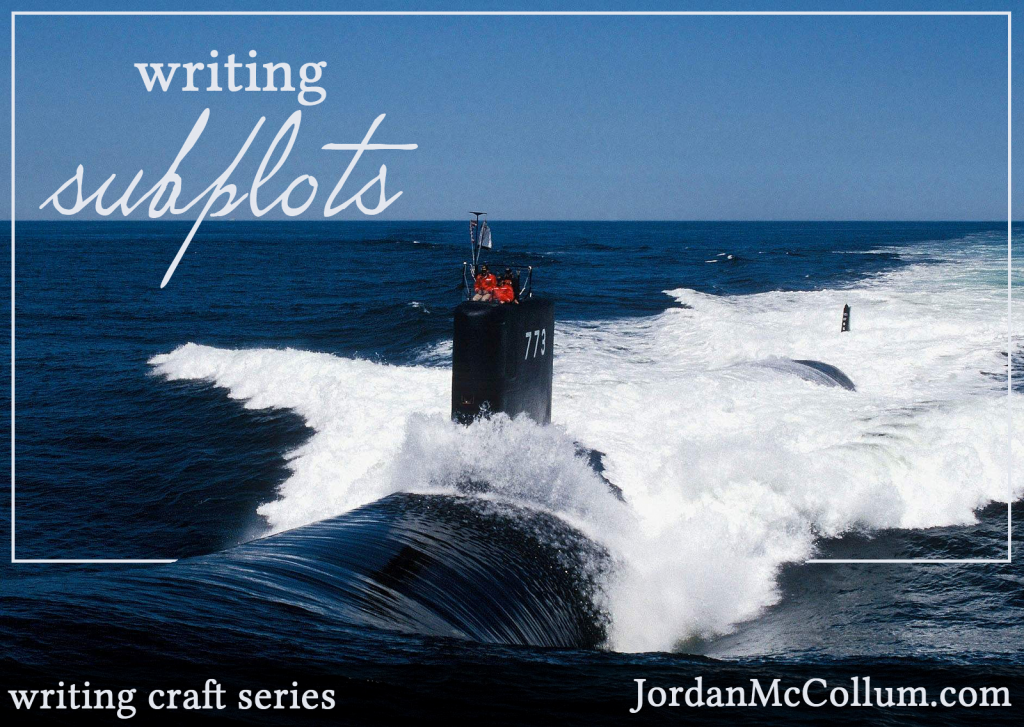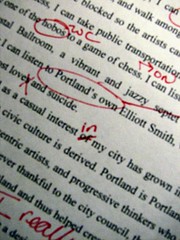 Every story has events. Stuff happens. But a group of events happening to the same people doesn’t necessarily constitute a “plot.” For a story to have a plot, the events must be related through cause-and-effect and build to a climax.
Every story has events. Stuff happens. But a group of events happening to the same people doesn’t necessarily constitute a “plot.” For a story to have a plot, the events must be related through cause-and-effect and build to a climax.
Do stories have to have a climax?
If you’re using a linear story structure, the short answer is yes. If you’re using a linear chronology within your story, the answer is double yes.

Most stories use a linear structure as well as a linear timeline—the events of the story occur in chronological order.
However, events merely happening in order doesn’t make a plot. The events must also be linked by cause and effect. For example, as E.M. Forster said,
The king died and then the queen died is a story. The king died, and then queen died of grief is a plot.
That little phrase, “of grief,” makes a world of difference. Our brains might fill in the causal link between the events of the first “story,” but that’s actually a logical fallacy (one of my faves: post hoc ergo propter hoc, after this therefore because of this). There could be any number of reasons why a couple might die in succession: perhaps they both had the plague or were hit by falling rocks. (Heck, in this single-sentence story, we don’t even know if the events happened close together!)
“Of grief” links the first and second events as cause and effect; it turns the two from coincident events into connected events. The next event occurs because of the previous one.
 Without this cause and effect link, the events of our story don’t build on one another. They don’t move a story forward. They’re just an account of people doing one thing, then another. At some point, a lack of cause-and-effect gets aggravating, since the events of the story don’t actually have logical relationships. They don’t have anything to do with one another except that they’re happening to the same characters.
Without this cause and effect link, the events of our story don’t build on one another. They don’t move a story forward. They’re just an account of people doing one thing, then another. At some point, a lack of cause-and-effect gets aggravating, since the events of the story don’t actually have logical relationships. They don’t have anything to do with one another except that they’re happening to the same characters.
Using cause and effect to build to a climax
Another integral part of any linear structure is the ultimate climax. Our plot events must be linked in cause-and-effect chains that build the intensity and stakes to the final, ultimate moment of confrontation between the protagonist and the antagonistic force (external, internal, natural, or any combination of the above).
 I have read way too many stories that have a series of chronological events that may or may not be causally linked, but that never build to this ultimate moment of the climax. But the climax is indispensable in linear structure. It’s that moment that shows us what our characters are made of, what they’ve learned in our story, how they’ve grown. With the climax, we see the reason why every event in the story was significant. Without a climax, none of them are, and the story just sort of . . . stops. It’s the climax that ultimately gives our story meaning in a linear structure.
I have read way too many stories that have a series of chronological events that may or may not be causally linked, but that never build to this ultimate moment of the climax. But the climax is indispensable in linear structure. It’s that moment that shows us what our characters are made of, what they’ve learned in our story, how they’ve grown. With the climax, we see the reason why every event in the story was significant. Without a climax, none of them are, and the story just sort of . . . stops. It’s the climax that ultimately gives our story meaning in a linear structure.
But my story jumps around in time.
Awesome! But a nonlinear timeline doesn’t exempt you from the requirements of telling a satisfying story with structure. The vast majority of stories use linear structure, even if they don’t use linear chronology.
Your jumping around in time narrative (time traveling or just nonlinear) can still build toward a climax. Movies like Memento and books such as the Mind Games series by Kiersten White play around with a linear timeline, interspersing scenes from the past. Those scenes from the past build tension and inform—but they don’t get in the way of building to a climax, the final confrontation.
Why structure
Good stories use structure; excellent stories use structure to their advantage. As brilliant author Jennifer Crusie puts it in a blog post that I’ve pondered for years:
Structure isn’t just a way to tell a story, it gives meaning to the story, it informs and intensifies the story, it says “This is what is important here, this is what you need to pay attention to.” Most of the time, most stories need linear structure[.]
Here’s a simple litmus test: if your story isn’t composed of events that are linked by cause-and-effect building to a final confrontation, you may not have a “plot.” Do you need one? If you want to sell commercial fiction and you aren’t a master of alternate story structures, usually.
The good news, however, is that you might be able to revise your way to one! Remember:
Revision is your chance to make the events of your story make sense and carry significance for your character and your readers!
Photo credits: chain—Legozilla, broken chain—Javier, Cape Disappointment—Aaron, map image courtesy of The Journey 1972 (South America “addicted”), all via Flickr/CC






 And it wasn’t until I really dug in to understand that revision can (and often should) mean re-envisioning your story that I really began to be a better writer—a publishable writer. Author Natalie Whipple knows where I’m coming from, as she lists “I wish I took editing seriously” as
And it wasn’t until I really dug in to understand that revision can (and often should) mean re-envisioning your story that I really began to be a better writer—a publishable writer. Author Natalie Whipple knows where I’m coming from, as she lists “I wish I took editing seriously” as 